 W
WJacob Adam was an Austrian copper etcher.
 W
WPierre Albuisson is a French postage stamp engraver and designer.
 W
WErhard Altdorfer was a German Early Renaissance printmaker, painter, and architect, who worked as a court painter in Schwerin from 1512 until his death in 1561.
 W
WBertrand Andrieu was a French engraver of medals. He was born in Bordeaux. In France, he was considered as the restorer of the art, which had declined after the time of Louis XIV. During the last twenty years of his life, the French government commissioned him to undertake every major work of importance.
 W
WJohn Bachmann, Sr. (1814–1896) was a Swiss-born lithographer and artist best known for his bird's-eye views, especially of New York City. He was a journeyman lithographic artist in Switzerland and Paris until 1847. His first known American print appeared in 1848, a view from an imagined point above Union Square in New York, looking south toward The Battery. In 1849 and 1850, he created and published a series of American views, including views of Boston, New York, Philadelphia, New Orleans and Havana. Both directly copied and used as a primary source by other lithographers at home and in Europe, these were the first major bird's eye views, as opposed to panoramic views in the United States.
 W
WFrans van Bleyswyck was an engraver from Leiden. Van Bleyswyck was christened in the Hoogland Church, Leiden, on 24 May 1671. It was the occasion for him to receive the Christian name of Frans. His main work was producing illustrations, including portraits, for books. In 1706 he enrolled with the Guild of Saint Luke in Leiden. The leiden etcher and engraver Johannes van der Spyck was his student.
 W
WGiovanni Francesco Cassioni was an Italian engraver in wood. He was born in Bologna, and made a number of portraits of painters for Carlo Cesare Malvasia to use in his Felsina Pittrice in 1678.
 W
WJean Dassier was a Genevan engraver and medallist.
 W
WJohn Mackie Falconer (1820–1903) was a Scottish-born American etcher, painter, and watercolorist. Born in Edinburgh, he came to the United States in 1836.
 W
WGiovanni Battista Falda was an Italian architect, engraver and artist. He is known for his engravings of both contemporary and antique structures of Rome.
 W
WAlbrecht Glockendon the Younger (c.1500–1545) was a Nuremberg-based miniaturist and woodcutter. The son of painter and printer Georg Glockendon, his work reflects the influence of both his brother, the illuminator Nikolaus Glockendon, and of Albrecht Dürer.
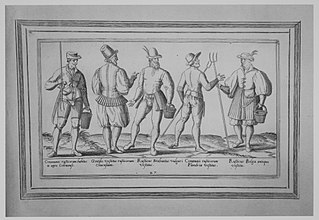 W
WJulius Goltzius was a Flemish printmaker and publisher. He was probably born in Antwerp around 1555 as the son of the painter, printer, publisher and humanist Hubert Goltzius and his wife Elisabeth Verhulst. His mother came from a well-known family of painters and illuminators from Mechelen. Her sister Mayken Verhulst married Pieter Coecke van Aelst and became the mother-in-law of Pieter Bruegel the Elder. Julius Goltzius married in 1587 in Antwerp and probably died in that city well after 1601.
 W
WThomas Scofield Handforth was an American artist and etcher. He wrote and illustrated the children's picture book Mei Li based on personal experience in China and won the 1939 Caldecott Medal for illustration.
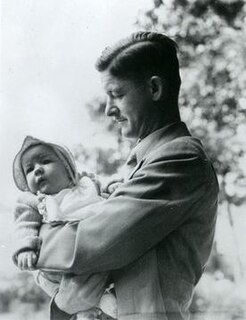 W
WJames Dexter Havens (1900–1960) was a printmaker and painter in Rochester, New York, who is considered part of the color woodblock revival in America. He has works in the collections of the Library of Congress, the Metropolitan Museum, the Albright-Knox Art Gallery, the Memorial Art Gallery of the University of Rochester, and Strong National Museum of Play. A founding member of the Print Club of Rochester, Havens designed its logo which is still in use.
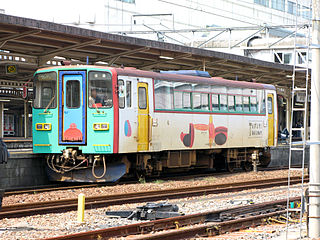 W
WMasuo Ikeda was a Japanese painter, printmaker, illustrator, sculptor, ceramist, novelist, and film director from Nagano Prefecture.
 W
WKatsukawa Shunchō was a Japanese designer of ukiyo-e style Japanese woodblock prints, who was active from about 1783 to about 1795.
 W
WJohn Kay was a Scottish caricaturist and engraver.
 W
WThe Kellogg Brothers were a family of lithographers and printmakers in Hartford, Connecticut from about 1830 to the end of the 19th century. The brothers were Jarvis Griggs Kellogg (1805–1873), Daniel Wright Kellogg (1807–1874), Edmund Burke Kellogg (1809–1872), and Elijah Chapman Kellogg (1811–1881). They operated in a series of partnerships, between themselves and with others, the firms having a variety of names that involved "Kellogg". They issued decorative prints that became popular for domestic use in American homes; they were second to the New York firm of Currier & Ives in their commercial success.
 W
WKitao Shigemasa was a Japanese ukiyo-e artist from Edo. He was one of the leading printmakers of his day, but his works have been slightly obscure. He is noted for images of beautiful women (bijinga). He was taught by Shigenaga and has been referred to as "a chameleon" who adopted to changing styles. He was less active after the rise of Torii Kiyonaga and produced relatively few works considering the length of his career. He is also noted for his haikai (poetry) and shodō. In his later years he used the studio name Kosuisai.
 W
WPierre Lepautre or Le Pautre was a French draughtsman, engraver and architect, especially known as an ornemaniste, a prolific designer of ornament that presages the coming Rococo style. He was the son of the designer and engraver Jean Lepautre and nephew of the architect Antoine Lepautre. His appointment in 1699 as Dessinateur in the Bâtiments du Roi, the official design department of the French monarchy, headed by Jules Hardouin-Mansart and later Robert de Cotte in the declining years of Louis XIV, was signalled by the historian of the Rococo, Fiske Kimball, as a starting point in the genesis of the new style.
 W
WErik Lindberg was a Swedish sculptor and engraver. He was best known for designing the Nobel Prize medals.
 W
WVasily Vasilyevich Mate, or Mathé, was a Russian artist and engraver. While he was not the author of any major original works, he was one of the major engravers in Russia during the late 19th century. He collaborated with major Russian painters and produced engravings of their paintings, thus helping popularize Russian art.
 W
WJacob Matham, of Haarlem, was a famous engraver and pen-draftsman.
 W
WLouis Maurer was a German-born American lithographer, and the father of the American painter Alfred Henry Maurer. He was the last surviving artist known to have been employed by Currier and Ives. Prior to his death, Maurer was extensively interviewed about the firm by collector and connoisseur Harry T. Peters for his book Currier & Ives, Printmakers to the American People.
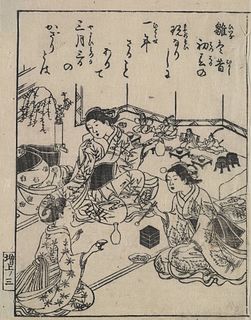 W
WNishikawa Sukenobu , often called simply "Sukenobu", was a Japanese printmaker from Kyoto. He was unusual for an ukiyo-e artist, as he was based in the imperial capital of Kyoto. He did prints of actors, but gained note for his works concerning women. His Hyakunin joro shinasadame, in two volumes published in 1723, depicted women of all classes, from the empress to prostitutes, and received favorable results.
 W
WJean Le Pautre or Lepautre was a French designer and engraver, the elder brother of the architect Antoine Le Pautre, the father of the engravers Pierre Le Pautre and Jacques Le Pautre, and the uncle of the sculptor Pierre Lepautre. Jean Le Pautre was an apprentice to a carpenter and builder. In addition to learning mechanical and constructive work, he developed considerable skill with the pencil. His designs, innumerable in quantity and exuberant in content, consisted mainly of ceilings, friezes, chimney-pieces, doorways and mural decorations. He also devised fire-dogs, sideboards, cabinets, console tables, mirrors and other pieces of furniture.
 W
WFerdinand Piloty was a German lithographer. He was the father of genre artist Karl von Piloty.
 W
WAlardo de Popma was a Flemish engraver, who worked in Madrid in the early seventeenth century, according to the earliest references to his works. His copperplate engravings include title-pages, frontispieces and portraits, which are characterized by an exceptionally clean and confident line.
 W
WSimon François Ravenet was a French engraver. In Britain he is usually termed Simon Francis Ravenet. He was one of William Hogarth's assistants.
 W
WJean-Claude Richard de Saint-Non was a French painter and printmaker. He was born, and also died, in Paris. He is often rather misleadingly known as the "Abbé de Saint-Non"; although intended for the church by his family, he never took more than minor orders. He was a pioneer of the aquatint technique in printmaking.
 W
WAlexander Hay Ritchie (1822–1895) was an artist and engraver. He was born in Glasgow, Scotland, and studied in the UK under Sir William Allan, before moving to New York in 1841. He specialised in mezzotints.
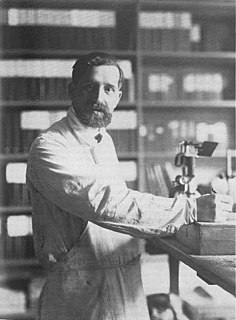 W
WEugene Séguy was a French entomologist and artist who specialised in Diptera. He held a chair of entomology at the Muséum national d'histoire naturelle in Paris from 1956 to 1960. He is also known for establishing the Diptera section at that museum. This entomologist is often confused with a French artist with a similar name: Émile-Allain Séguy (1877–1951). The latter is known for his pochoir artworks representing plants and insects.
 W
WLuis Seoane (1910–1979) was a lithographer and artist. Born in Buenos Aires, Argentina on June 1, 1910, of Galician immigrants, he spent much of his childhood and youth in Galicia (Spain). He was educated in A Coruña. His first exhibition was held in 1929.
 W
WIsaac Sorious was a Dutch Republic engraver, etcher and painter, who worked at Utrecht, Amsterdam and possibly at Rome . He is known for his series of thirteen etchings, depicting the destruction by French troops in the Utrecht province during the Disaster Year Rampjaar 1672. He is also the author of satirical allegorical prints, for instance on the subject of stadtholder William III of Orange.
 W
WViktor Stretti, born Vítězslav Otakar Stretti was a well known Czech etcher and lithographer. His brother was the etcher Jaromír Stretti-Zamponi.
 W
WSugimura Jihei was a Japanese ukiyo-e printmaker who flourished from approximately 1681 to 1703. He is noted by art historian and ukiyo-e collector Richard Lane as an “indirect pupil” of Hishikawa Moronobu. Much of Sugimura’s work was once attributed to fellow followers of Moronobu, or Moronobu himself. In the 1920s, however, unsigned prints were discovered to have hidden signatures of Sugimura's incorporated in the drawing of the clothing folds. It appears Sugimura preferred to sign with his surname rather than his given name.
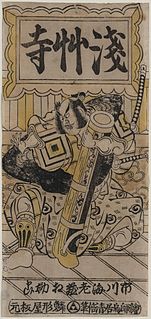 W
WTorii Kiyomasu II was a Japanese ukiyo-e painter and woodblock printmaker of the Torii school, a specialist, like the rest of the Torii artists, in billboards and other images for the promotion of the kabuki theatres. Scholars are unsure as to Kiyomasu II's relation to the original Kiyomasu who came a few decades earlier; they may have been close relations, or master and student, or they may have been the same man.
 W
WToriyama Sekien , real name Sano Toyofusa, was an 18th-century scholar, kyōka poet, and ukiyo-e artist of Japanese folklore. Born to a family of high-ranking servants to the Tokugawa shogunate, he was trained by Kanō school artists Kanō Gyokuen and Kanō Chikanobu, although he was never officially recognized as a Kanō school painter.
 W
WUtagawa Toyohiro , birth name Okajima Tōjiro (1773–1828), was a Japanese ukiyo-e artist and painter. He was a member of the Utagawa school and studied under Utagawa Toyoharu, the school's founder. His works include a number of ukiyo-e landscape series, as well as many depictions of the daily activities in the Yoshiwara entertainment quarter; many of his stylistic features paved the way for Hokusai and Hiroshige, as well as producing an important series of ukiyo-e triptychs in collaboration with Toyokuni, and numerous book and e-hon illustrations, which occupied him in his later years.
 W
WJan van Troyen was a Flemish engraver and etcher. He is mainly known for the work he did for David Teniers the Younger on the illustrations for the Theatrum Pictorium, an publication which gave an overview of the paintings in the collection of the Archduke Leopold Wilhelm.
 W
WPhilipp Uffenbach was a German painter and etcher. He was born in Frankfurt, and trained under Hans Grimmer. One of his pupils was Adam Elsheimer. His interests included mechanics, geometry alchemy, and anatomy.
 W
WUtagawa Kunimasa was a Japanese ukiyo-e artist of the Utagawa school. He was originally from Aizu in Iwashiro Province and first worked in a dye shop after arriving in Edo. It was there that he was noticed by Utagawa Toyokuni, to whom he became apprenticed.
 W
WUtagawa Kunisada II was a Japanese ukiyo-e print designer, one of three to take the name "Utagawa Kunisada". He headed the Utagawa school.
 W
WUtagawa Kunisada III (歌川国貞) (1848–1920) was an ukiyo-e printmaker of the Utagawa school, specializing in yakusha-e. He began studying under Utagawa Kunisada I at the age of 10, and continued under Kunisada II after their master's death.
 W
WBernhard Wachtl was an Austrian lithographer whose printing firm was based in Vienna. His work is dated mainly in the latter half of the 19th century and can be traced in Austria as well as in the Mediterranean region.
 W
WJohn Henry Walker (1831–1899), a pioneer Canadian engraver and illustrator, was from County Antrim in Northern Ireland and as a young boy emigrated in 1842 to Canada with his family, settling in Toronto, Upper Canada. In 1845 he was apprenticed for three years to the engraver Cyrus A. Swett, where he was trained in copper and wood engraving.
 W
WEdwin Whitefield was a landscape artist who is best known for his lithographed views of North American cities and for a number of illustrated books on colonial homes in New England.
 W
WYanagawa Shigenobu was a Japanese artist in the ukiyo-e style. He was active in Edo from the Bunka period onward. His Osaka period dated from 1822 to 1825. In Edo, he resided in Honjo Yanagawa-chō district. He was first the pupil, then son-in-law, and finally adopted son of the Edo master painter Katsushika Hokusai. He designed illustrated books, prints, and surimono. In Osaka, he worked with the gifted block cutter and printer Tani Seikō.
 W
WYoshida Hanbei was a late seventeenth-century Japanese illustrator in the ukiyo-e style, the leading illustrator in Kyoto and Osaka around 1664–1689. Unlike many more famous ukiyo-e artists, who worked primarily on individual woodblock prints and paintings, Hanbei worked primarily, if not exclusively, in illustrations for woodblock printed books. Alternatively known as Yoshida Sadakichi, his name is also sometimes romanized as Hambei.
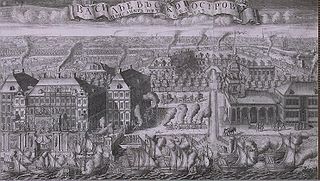 W
WAlexey Fyodorovich Zubov (1682–c.1741) was a Russian etcher.